D3.js, a flexible JavaScript library useful for visualization, can feel intimidating at first. It does a lot. So Ian Johnson gave a talk on what the library provides, along with a tour of the essentials.
-
tixy.land is a minimalist coding environment by Martin Kleppe:
Control the size and color of a 16×16 dot matrix with a single JavaScript function. The input is limited to 32 characters – but no limits to your creativity!
Fun. You can find a tiny bit more info here.
-
For The Washington Post, Ashlyn Still and Ted Mellnik show the shifts in the 2020 election compared against the 2012 and 2016 elections. Good use of swooping arrows.
-
The microCOVID Project provides a calculator that lets you put in where you are and various activities to estimate your risk:
This is a project to quantitatively estimate the COVID risk to you from your ordinary daily activities. We trawled the scientific literature for data about the likelihood of getting COVID from different situations, and combined the data into a model that people can use. We estimate COVID risk in units of microCOVIDs, where 1 microCOVID = a one-in-a-million chance of getting COVID.
-
The Washington Post goes with a wind metaphor to show the change in voting activity between 2016 and 2020. The up and down direction represents change in turnout, and the left and right direction represents change in vote margin.
A fun riff on the classic Viégas and Wattenberg wind map and the Bostock and Carter election map from 2012.
-
Sometimes our eyes play tricks on us. Even when we know what is actually happening, our visual system won’t let us see the reality. Michael Bach has an extensive collection of 141 optical illusions, along with explanations of what’s tripping up:
Optical illusion sounds derogative, as if exposing a malfunction of the visual system. Rather, I view these phenomena as highlighting particular good adaptations of our visual system to experience with standard viewing situations. These experiences are based on normal visual conditions, and thus under unusual contexts can lead to inappropriate interpretations of a visual scene (=”Bayesian interpretation of perception”).
-
Members Only
-
Meanwhile… based on estimates from The COVID Tracking Project, the United States had an all-time high for daily counts yesterday, at 103,087. And 1,116 people died.
-
Still waiting for those results? Bloomberg’s election page for each state shows the estimated range of votes counted so far. Really like the dual encoding with the shaded gradient and line. For example, here’s the page for Pennsylvania.
-
As we wait for the votes to be counted in the remaining states, here are a couple of interactives to test the possibilities. The New York Times updated their graphic on all possible paths to the White House (the original from 2012).
FiveThirtyEight also has their thing:
Or, there’s this decision tree by Kerry Rodden:
Or, you could carry on with your day as if nothing is happening and not concern yourself with things that are outside of your control.
Nope. Not gonna do that.
-
The NYT election needles of uncertainty are back, and they’re about to go live (if they haven’t already). I’m not watching, but in case that’s your thing, there you go.
It’s a little different this time around, because of the pandemic and mail-in voting. There’s no national needle this time. Instead, there are three needles for Florida, Georgia, and North Carolina, because they’re battleground states and the necessary data to run the estimates is available.
-
If you want to color in your own electoral map at home, The Washington Post provides this blank, printable page. I hear coloring is soothing or something like that. [via @SethBlanchard]
-
I’ve been distracted lately, so instead of making regular charts, I’ve been making animated GIFs using various visual encodings. It hits the sweet spot of producing something without having to access the part of my brain for longer thinking sessions.
Tunnels:

Round and round:

Needles of uncertainty made certain:

I hope this brings some calm and predictability to your day.
-
It’s election day here in the United States, but millions of votes have already been mailed or dropped off. In some states, the number of early votes already surpassed the total in 2016. The New York Times provides a state-by-state breakdown.
-
For NYT Opinion, Betsy Mason outlines the design challenges behind election maps. Do you show geography? Do you focus on scale? What colors should you use? For every choice, there’s always tradeoffs, which is why there are so many views.
-
Federal judge appointments are for a lifetime, so the younger a judge is appointed, the more potential years they can serve. For ProPublica, Moiz Syed charted age, time of appointment, and average retirement age to show how current appointments can make impact for decades.
-
Masks are effective in slowing down the spread of the coronavirus. The New York Times zoomed in at the particle level to show how masks do this.
-
With this simple choropleth map, Lauren Leatherby for The New York Times shows where coronavirus cases peaked in the past month or week. It appears the United States still has a way to go:
With case counts trending upward in almost every state — and 21 of those states adding more cases in the last week than in any other seven-day stretch — officials in parts of the country are once again implementing control measures. Residents of El Paso are under a two-week stay-at-home order, and indoor dining will be halted in Chicago beginning Friday, Oct. 30. Other officials are considering new restrictions in an effort to curb the virus’s rapid spread.
Oh.
-
FiveThirtyEight and The Economist take similar inputs but output different forecasts. Adam Pearce was curious about how the state-by-state correlations differed between the two models:
Outside of the CA-DC-VT-WA and LA-MS-ND-KY clusters, where the 538 correlation dips below 0, the models are mostly aligned. Glancing over the outliers, it looks like the Economist might not have an equivalent to 538’s regional regression that groups states in the same geographic region together; the Economist has HI at 0.2 correlation with WA & OR while 538 has it around 0.7.
-
Members Only

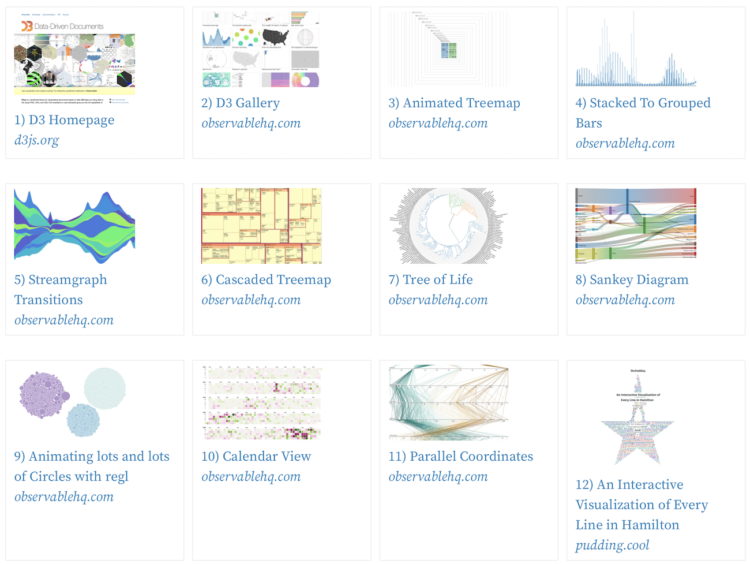

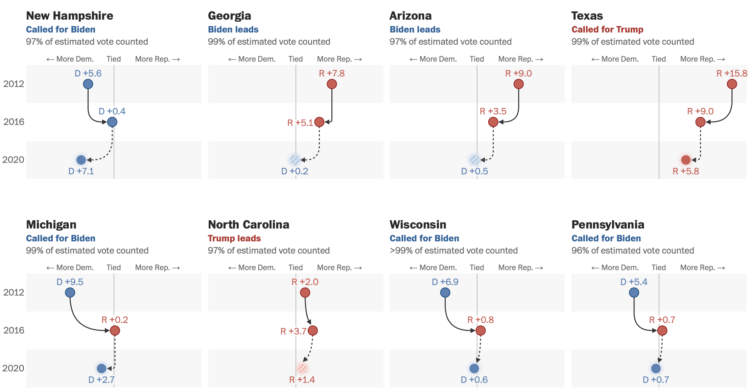
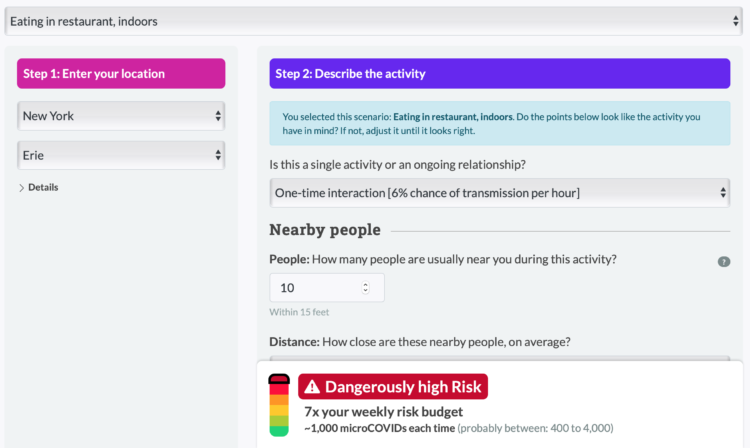
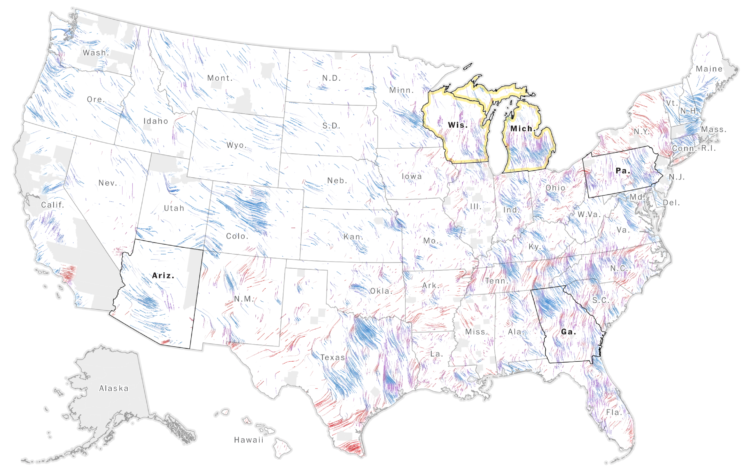
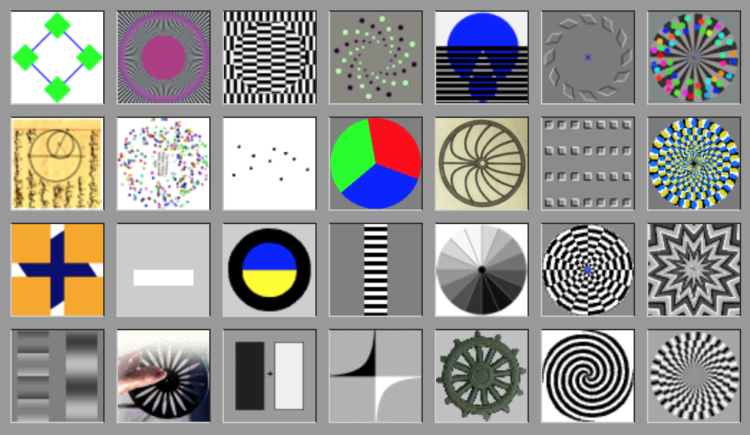

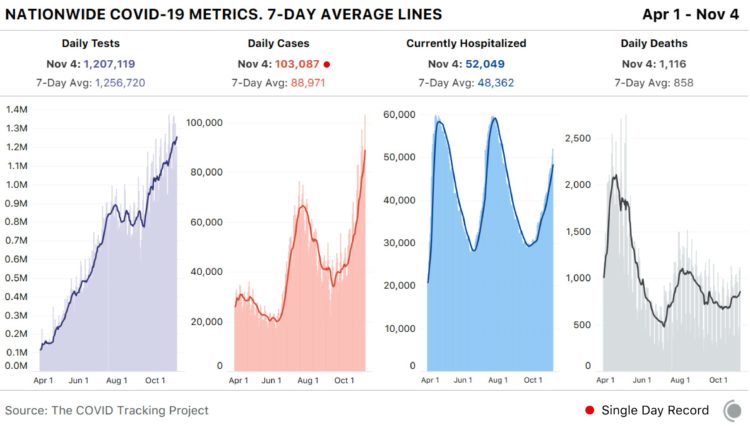
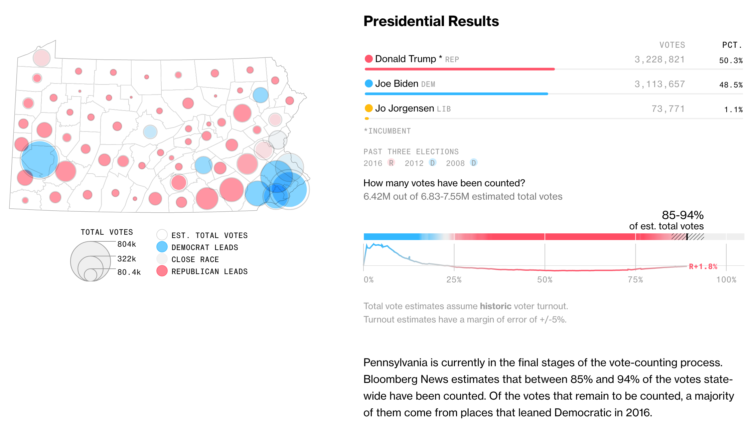
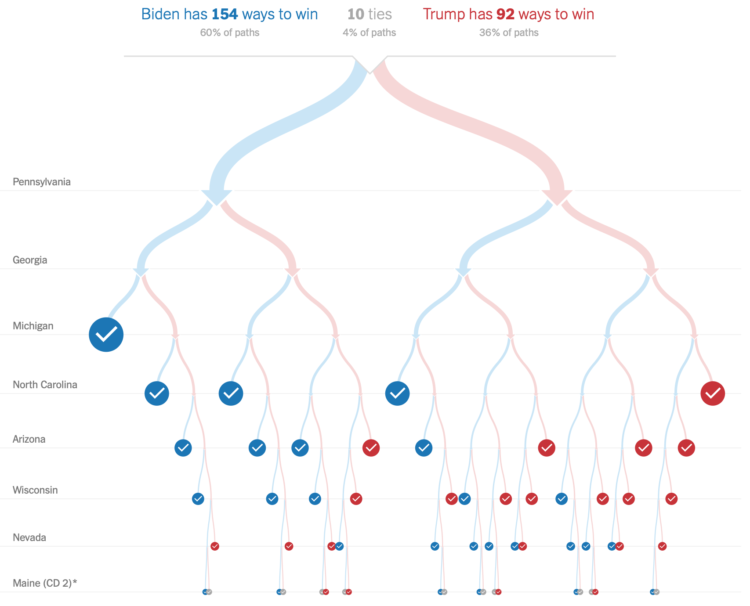
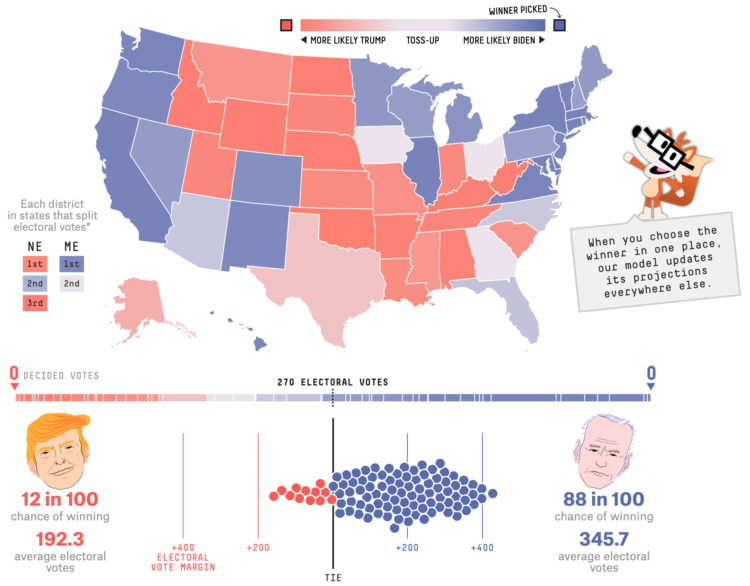
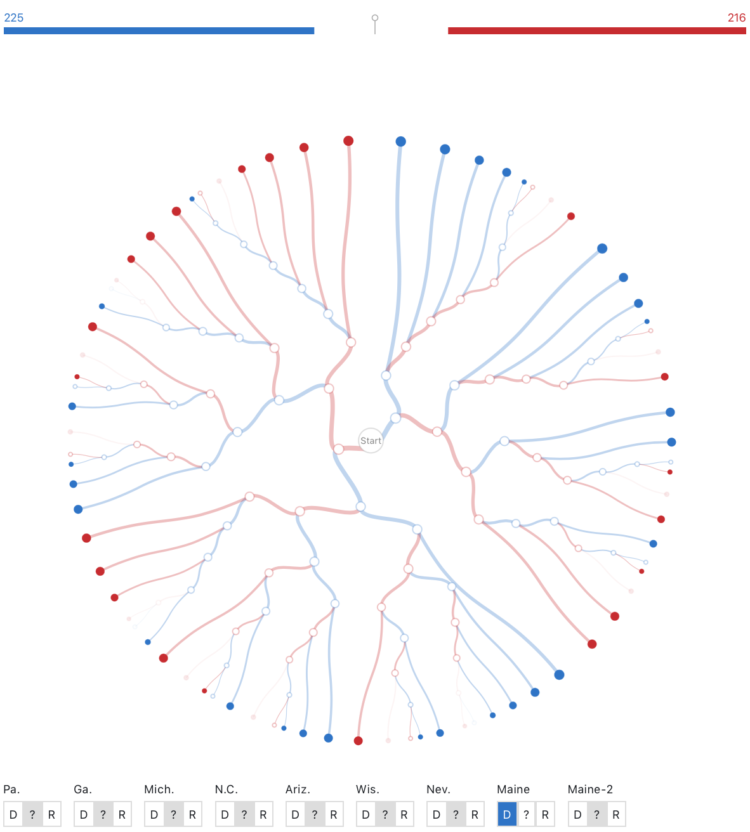
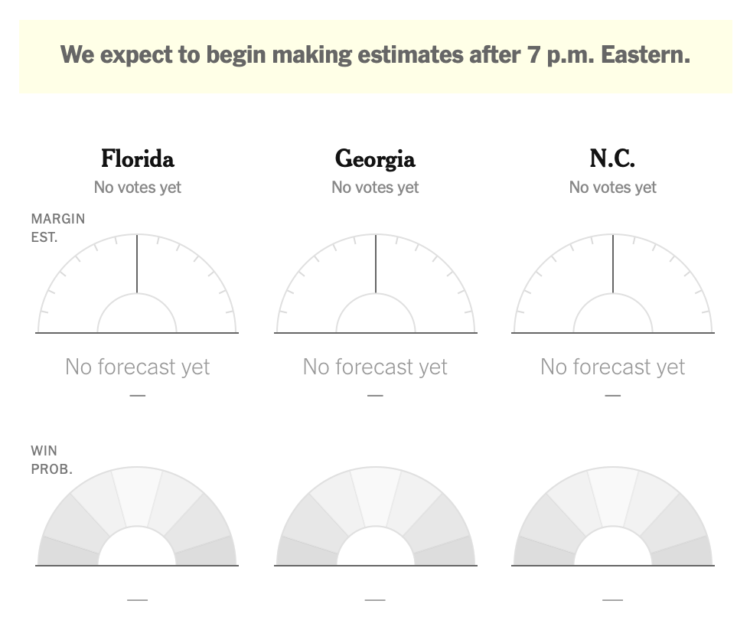
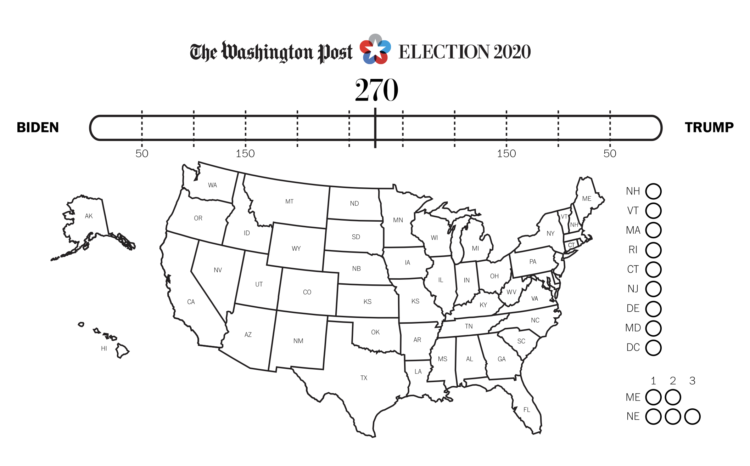

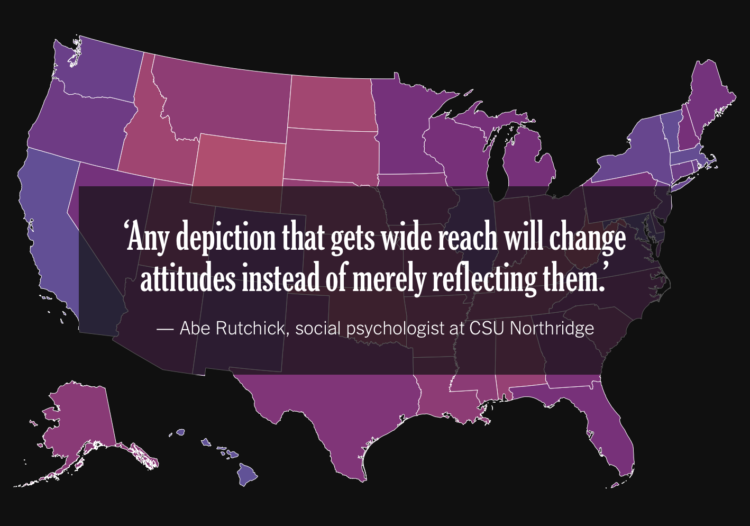
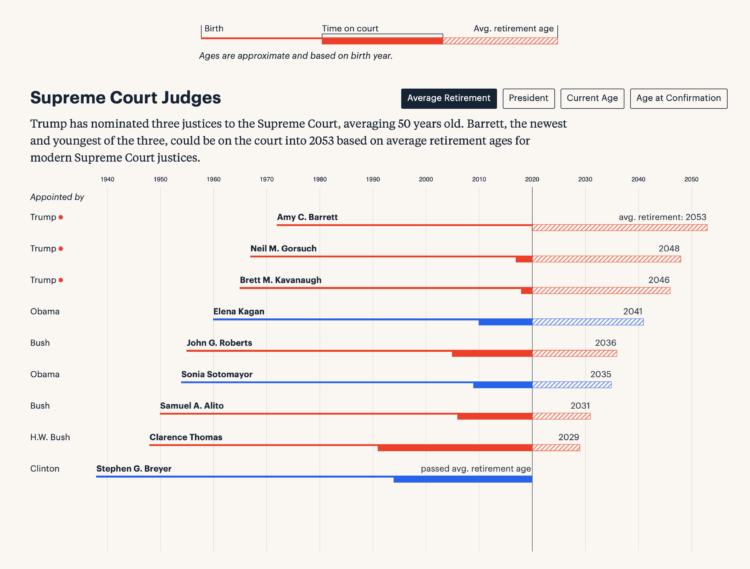

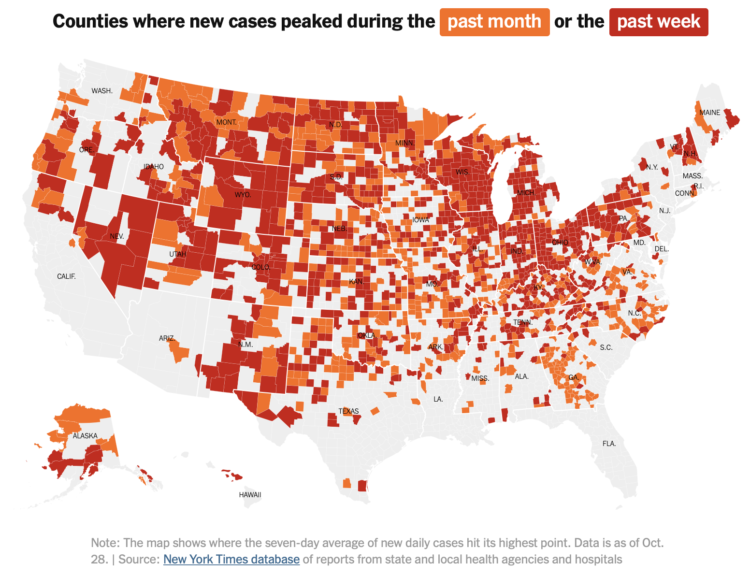
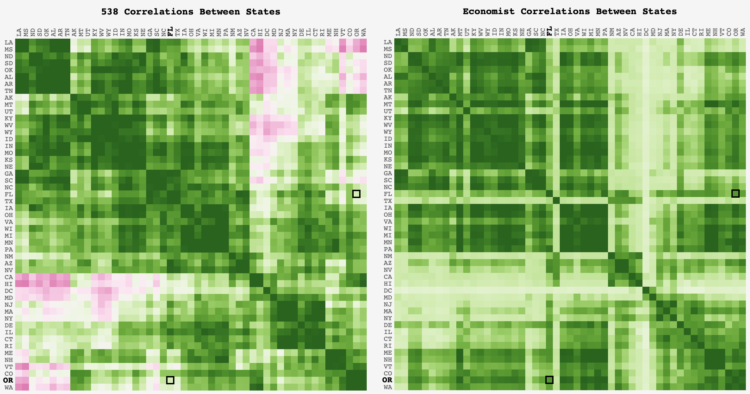
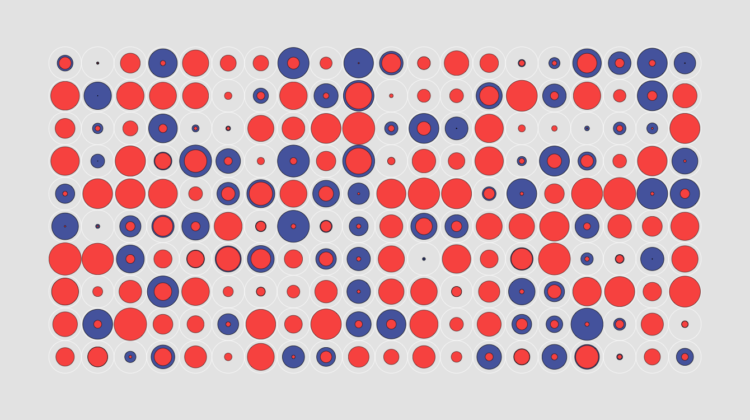
 Visualize This: The FlowingData Guide to Design, Visualization, and Statistics (2nd Edition)
Visualize This: The FlowingData Guide to Design, Visualization, and Statistics (2nd Edition)










